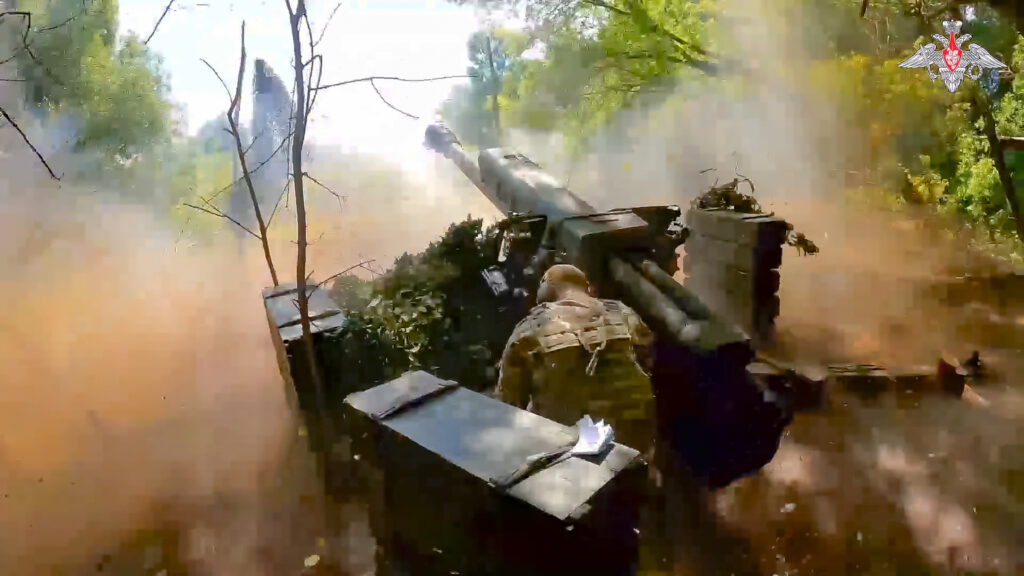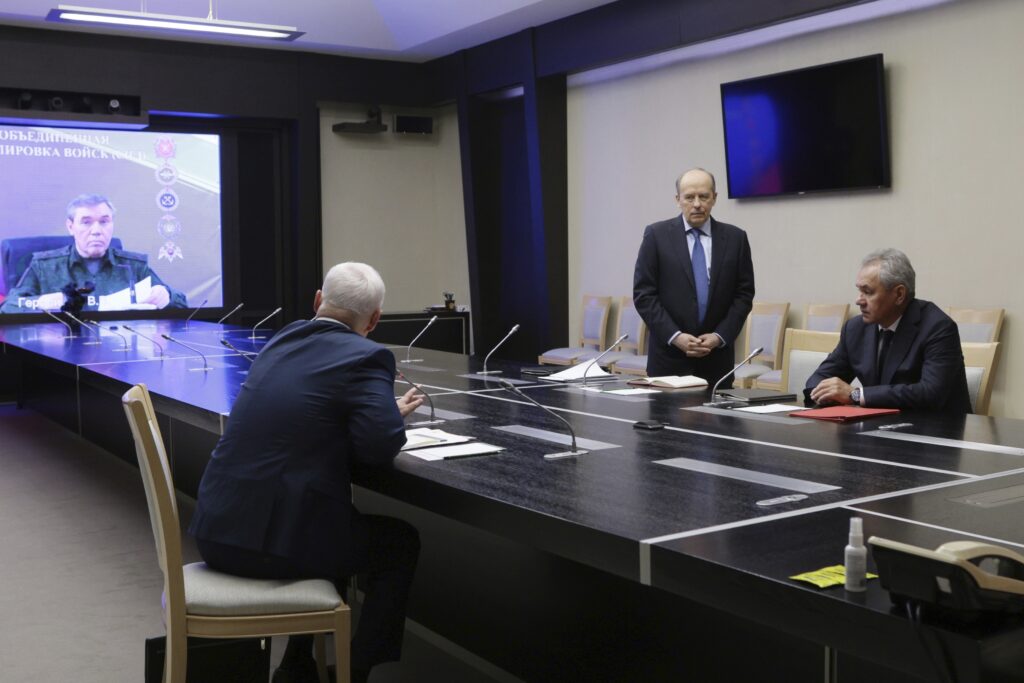
This article was originally published on NY Sun - Foreign. You can read the original article HERE
Moving across the chessboard of Western Russia, Ukraine’s army may be hunting bigger prizes than the dozen farming villages it appears to have taken. They could be: Russia’s largest pipeline gas export hub and a Chernobyl-era nuclear power plant.
In what President Putin denounced yesterday as “a large-scale provocation,” as many as 1,000 Ukrainian troops crossed the lightly defended border at dawn Tuesday. In a major intelligence failure, soldiers in the Kursk region were taken by surprise. About 300 have been taken prisoner. Drone videos appear to show dozens of Russian soldiers walking with their hands over their heads.
Military casualties are not known. Russian health officials say civilian casualties are 31 wounded and five dead. At least 6,000 people have been evacuated from 23 settlements in border districts of Kursk. The acting regional governor, Alexei Smirnov, declared a state of emergency in the affected area and appealed to residents to donate blood due to the intense fighting.
In the fighting, Russia lost two tanks and two helicopters. In what may be a first for drone warfare, a Ukrainian drone apparently downed a Russian Mi-28 helicopter by hitting its tail rotor.

Beyond giving Ukrainians a morale boost, Kyiv’s war planners may be collecting bargaining chips for armistice talks or to impress a new administration in Washington. The Kursk border region holds two strategic prizes: a chokepoint for half of Russian gas going to Europe by pipeline, and Russia’s westernmost nuclear power plant.
Yesterday, Ukrainian troops entered Sudzha, a Russian town of 6,000 located five miles from the border. Sudzha is the junction hub for two main gas lines — the Trans-Siberian pipeline and the 5,000-mile Brotherhood pipeline from the Arctic. After mysterious explosions took out Russia’s twin Baltic pipelines two years ago, Sudzha became the sole entry point for Russian gas into Ukraine’s pipeline system bound for Europe. Currently, 40 million cubic meters of gas passes daily through this hub.
In the last 48 hours Sudzha has been bombed and evacuated. In the confusion of the Russian military retreat, Russian airplanes bombed the city while Russian soldiers still held it, according to “Osman,” a soldier with Ukraine’s 24th Aidar Assault Batallion.
“Heavy fighting is underway in the Kursk region,” Russian blogger Anastasia Kashevarova posted yesterday evening. “Sudzha has been evacuated — government agencies, some institutions.”
According to two Russian military bloggers, Ukrainian soldiers now control the gas metering station.
“I was just in the center, everything is more or less intact,” a worried man in a crew cut says in a selfie recorded in Russian. “The prosecutor’s office is destroyed. The city administration is flying the Ukrainian flag.”

One Ukrainian “soldier called me over, checked my documents, and wasn’t rude,” the Russian man continued as he walked quickly. “I asked, ‘What should we do?’ He said, ‘Learn the Ukrainian anthem and prepare for a referendum.’”
Kyiv authorities can always cut off the pipeline after it crosses into Ukraine. Indeed, the Zelenskiy government has said it will not renew the multi-billion dollar transshipment contract with Russia’s Gazprom when it expires this December 31. However, that may be a negotiating tactic. Controlling the on-off button in Sudzha may be another bargaining chip.
The Russian blogosphere is aflame, meanwhile, with warnings that the Ukrainians could drive their American-made Stryker armored fighting vehicles 50 miles north to take the Kursk Nuclear Power Plant.
This Kursk plant is one of 10 working power plants in Russia. Its two reactors supply electricity to 20 regions in European Russia. Built in the 1970s, the reactors were used as film sets for a 1991 American TV movie: “Chernobyl: The Final Warning.” Yesterday Russia’s National Guard said it had beefed up security around the Kursk plant.
The plant is located at Kurchatov, a city named after Igor Kurchatov, the Soviet nuclear physicist. Aided by nuclear secrets stolen from America’s Manhattan Project, Kurchatov developed and tested the Soviet Union’s first atomic bomb in 1949. Today, international intrigue swirls around the power plant.
“Why do the Ukrainian Armed Forces need the Kursk Nuclear Power Plant?” asked Russian war correspondent Alexander Sladkov. He answered that Ukraine could take the plant hostage in order to win the liberation of Ukraine’s Zaporizhzhia nuclear power plant, a complex occupied by Russian soldiers since 2022. Sladkov wrote: “Otherwise they will blow up the Kursk Nuclear Power Plant (it is impossible to blow it up with artillery and missiles), causing a gigantic catastrophe.”
In retort, Dmitri from the War Translated Telegram channel noted that the plant is 60 miles from the Ukrainian border and a few miles from Kursk, a city of 440,000 people. He posted: “You’d need a huge amount of forces to not only reach it, but also capture and then hold it.”
While Russian bloggers speculate about Ukraine’s goals with the Kursk incursion, many agree that it was well-planned and shows the signs of a professional army — artillery, air-defense systems, electronic-warfare equipment, and armored fighting vehicles and tanks supported by drones. Ukraine is keeping an information blackout on the operation, refusing to confirm or deny if the Army is involved.
Russian bloggers are furious that their military was so unprepared. “We knew that the Ukrainian Armed Forces would go to Kursk Oblast,” blogger Kashevarova fumed on Telegram. “We knew that they were pulling forces.”
Ukrainian “columns are moving across our lands,” while the Russian “troops and infantry are nowhere to be found…there is no artillery, no tanks, no equipment, and did anyone prepare for this?” the Callsign OSETIN Telegram channel posted. “Honestly, all the guys who worked these past two days are just in shock from what is happening. Can you send at least someone?”
This article was originally published by NY Sun - Foreign. We only curate news from sources that align with the core values of our intended conservative audience. If you like the news you read here we encourage you to utilize the original sources for even more great news and opinions you can trust!










Comments